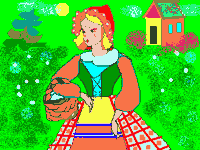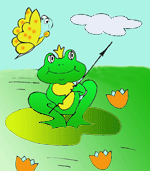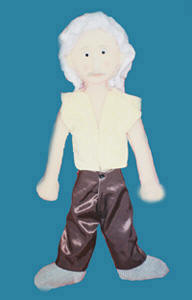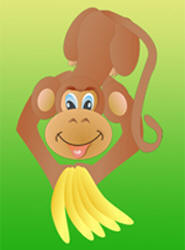Loginova Olga: Consulting Psychologist specializing in Positive Psychology. Art Therapist, Trainer of NLP
E-mail:
psycholog50@mail.ru
call at:
+7(916)555-98-10
Russia, Moscow
Article by
Loginova Olga,
Psychologist – councilor in positive psychology.
The
full text in Russian and English languages

Fairytale Therapy in work with the adults and children
Introduction
Today the psychology counseling is practicing one of the art-therapy directions «Fairytale Therapy ». With every day the Fairytale Therapy gains more popularity.
It is connected with the fact that the sense of the fairy tale is understood on two levels at once, the conscious and subconscious ones.
Fairytale Therapy is the directions of the practical psychology availing of the fairy tales resources for resolution of a number of tasks: upbringing, education, personality development and behavior correction.
Fairytale Therapy can be used in work with the children of the preschool age, juveniles and adults. At that this method is suitable for the people with higher education and for those ones without it. For men and women. Usage of the therapeutic fairy tale allows to pass the psychological resistance of the client and even to work with the problem which the client is not ready to say aloud for this or that reason.
Within the shortest period we can work through with the client the stressful or conflict situations. With children we can work through every possible fears and phobias. We can show the ways for resolution of problems by way of illustration with the fairytale figures etc.
Chapter 1. Fairytale Therapy as a method of psychological work with the children and adults.
Fairytale Therapy is the method using the form for the personality integration, development of the creative abilities, expansion of the consciousness, perfection of the interaction with surrounding world. The fairy tales were referred to in the works of the foreign and domestic psychologists: E. Fromm, E. Bern, E. Gardner, I. V. Vachkov, M. Osorina, E. Lisina, T. Zinkevich-Yevstigneeva, etc. [6].
The term «Fairytale Therapy» as such means «treatment with the fairy tale». As Vachkov I.V. [1] wrote, the fairy tales are used both by the doctors, and the psychologists, and the pedagogues, and each specialist can find in the fairy tale that resource which helps him to resolve his professional tasks.
The timely told fairy tale means for the child as much, as the psychological counseling for an adult. Difference is only that the child is not required to make any conclusions aloud and to analyze what is going on with him: work is made at the internal, subconscious level [10].
In understanding of T.D. Zinkevich-Yevstigneeva, the Fairytale Therapy is not just a psychotherapy direction, but it is the synthesis of many achievements in psychology, pedagogy, psychotherapy and philosophy of different cultures [7].
T.D. Zinkevich-Yevstigneeva writes: «During the seminars on the Fairytale Therapy we are often asked the questions on how to work with the specific problems: phobias, uracrasia, habit spasms, aggression etc. Often we answer with an old psychological saying:« don’t be misled by the symptom, work with the reason».
Tkach R.M. [9] in his book «Fairytale Therapy of the children's problems» structures the fairy tales according to the independently taken children's problems:
1. Fairy tales for the children, who experiences fear of darkness, fear of the medical cabinet and other fears.
2. Fairy tales for the hyperactive children.
3. Fairy tales for the aggressive children.
4. Fairy tales for the children, suffering the disorders of behavior with the physical implications: problems with meals; problems with the urinary bladder etc.;
5. Fairy tales for the children who faced the problems of family relations. In case of divorce of the parents. In case of a new family member appearance. When children think that they should feel much better in another family.
6. Fairy tales for the children in case of loss of the close people or beloved pets.
1.1. Genres used in the Fairytale Therapy
By definition of T.D. Zinkevich-Yevstigneeva, the Fairytale Therapy uses various genres: parables, fables, legends, bylinas, sagas, myths, fairy tales, jokes. The modern genres are also applied: detectives, love stories, fantasy and so on. Each client is offered the genre corresponding to their interests.
As Vachkov I.V. [1] writes, the main agent of the psychological influence in the Fairytale Therapy is the metaphor, as the core of any fairy tale. It is the depth and accuracy of the metaphor what defines the efficiency of the Fairytale Therapy methods in work with the children and adults.
Let's stop on some methods which showed themselves to a very good side in the psychological counseling. These are the work with the parable and work with the fairy tale. It is important for us to detect the functions of parables and fairy tales.
1.1.1. Function of parables
T.D. Zinkevich-Yevstigneeva says: «As a rule, the parable itself is the carrier of the deep life philosophy. The life lesson in parables is not veiled, instead it is directly formulated. Usually one parable is dedicated to one lesson». The parable can be used in work both with adults, and with the teenagers.
For family and individual counseling the stories, parables, aphorisms, metaphors, fairy tales and jokes are also used often enough.
According to N. Pezeshkian [11]: «stories can have the most various influence on the person. They have educational and therapeutic value. The person perceives the sense of each history in his own way, depending on his views.
If the stories and parables for psychological counseling are correctly selected, they allow to choose a certain distance so that differently to look at the own conflicts and to find ways to resolve the conflicts.
Stories offer various variants of measures.
After acquaintance with the family and revealing its actual problems the psychologist chooses a situation, story, myth, parable as a topic for discussion which would reflect the family problems.
One of the story’s important functions is the storage of experience that is after the termination of the psychotherapeutic work it continues having its effect on the client and makes him more independent on the therapist».
1.1.2. Functions of fairy tales
There are some basic functional features of the fairy tales [6].
1. Texts of the fairy tales cause an emotional resonance both in children and in adults. Images of fairy tales address simultaneously to two mental levels: to the consciousness and sub-consciousness level.
2. The concept of the Fairytale Therapy is based on the idea of value of a metaphor as a data carrier:
-
about the essential phenomena;
-
about the life values;
-
about the private world of the author (in case of an author's fairy tale).
3. The fairy tale contains in the symbolical form the information on:
-
how this world is arranged, who created it;
-
what is happening with the person during the different periods of his life;
-
what stages a woman passes in the course of self-realization;
-
what stages a man passes in the course of self-realization;
-
what difficulties and obstacle can be met in the life and how to cope with them;
-
how to get and value the friendship and love;
-
what values to be guided with in the life;
-
how to build relations with the parents and children;
-
how to forgive.
1.2. Typologies of the fairy tales
T.D. Zinkevich-Yevstigneeva marks out six types of the fairy tales [5]: artistic, folk, author's folk, didactic, psycho-correctional fairy tales and psychotherapeutic fairy tales.
1. Artistic fairy tales
 They
include the fairy tales created by centuries-old wisdom of the people and the
author's stories. Actually, exactly such stories shall be called fairy tales,
myths, and parables. The artistic fairy tales have both didactic, and
psycho-correctional, and psychotherapeutic, and even meditative aspects.
Artistic fairy tales were created not for the psychological counseling, but
nevertheless successfully serve to it.
They
include the fairy tales created by centuries-old wisdom of the people and the
author's stories. Actually, exactly such stories shall be called fairy tales,
myths, and parables. The artistic fairy tales have both didactic, and
psycho-correctional, and psychotherapeutic, and even meditative aspects.
Artistic fairy tales were created not for the psychological counseling, but
nevertheless successfully serve to it.
2. Folk fairy tales
The most ancient folk fairy tales are called in the study of literature to be myths. The most ancient basis for the myths and fairy tales is the unity of the person and the nature. It was typical for the ancient consciousness to find the personalia for the human feelings and relations: love, grief, suffering and so forth. We are also using this phenomenon in the psychological-pedagogic practice of today.
In its turn some words shall be said separately about the plots of fairy tales.
Plots of the folk fairy tales are diverse. Among them we can mark out the following kinds.
-
Fairy tales on animals, mutual relations between people and animals. Children under five-years-old age identify themselves with the animals, try to be them alike. Therefore the fairy tales on animals can better transfer the life experience to small children.
-
Everyday life fairy tales. They often tell about the everyday life falsities; show the ways for resolution of the conflict situations. They form the position of common sense and sound sense of humor with regard to the hardship, tell about small family cunnings. Therefore the everyday fairy tales are irreplaceable in the family counseling and in work with the juveniles aimed at formation of an image for the family relations.
-
Scary stories. Fairy tales about the evil spirits: witches, vampires and the others. The modern kids’ subculture distinguishes also the fairy tales- bogeyman stories. Apparently, here we deal with the fact of the kids’ self-therapy: repeatedly modeling and worrying the disturbed situation in the fairy tale, children feel relief from the tension and get new ways of reaction.
-
To improve the stress resistance and «playing out» the tension it is useful to apply the telling of bogeyman stories in a group of children (over 7 years old) and teenagers. At that we shall introduce two rules: to tell the story with a " terrifying " voice, stretching the vowels, "stretching" the intonation; the end of the bogeyman stories should be obligatory unexpected and ridiculous.
-
Magic fairy tales. The most fascinating fairy tales for those of 6-7 years. Thanks to the magic fairy tales the subconscious of the person receives the "concentrate" of the life wisdom and the information on spiritual development of the person [5].
Work with fairy tales begins from analysis of it, discussion. When the fairytale senses will be worked through and bound with the real life situations, it is possible to use the other forms of work with fairy tales: manufacturing of puppet, dramatization, drawing, sand therapy.
3. Author's artistic fairy tales
To help the patient to understand his internal experiences, it is recommended to choose for work with him the author's fairy tale, in spite of the considerable quantity of personal projections (they are valuable at that moment!).
4. Didactic fairy tales
The educational tasks are given n the form of the didactic fairy tales.
During the Fairytale therapy lessons the children learn to copy the mathematical examples given as the home work in the form of the didactic fairy tales. In these stories the example solution is a passage of the test, a series of the solved examples leads the hero to success.
5. Psycho-correctional fairy tales
Tkach R.M. [9] thinks that for the fairy tale or history to find the strength and to assist, it is necessary to adhere to certain rules for creation of it:
-
The fairy tale should be in some details identical to the problem of the child, but should not have the full similarity with it.
-
The fairy tale should offer the replacing experience, using which child can make a new choice when solving the problem. Or the psychologist should help with it.
-
The fairytale plot should be developed in certain sequence:
-
Once upon a time there lived.
The fairy tale beginning, acquaintance with its heroes.
For children of 3-4 years it is recommended to make a toy, little men and animals to be the key hero of the fairy tales;
Starting from 5 years – fairies, wizards, princesses, princes, soldiers and so forth.
Approximately from 5-6 years the child prefers the magic fairy tales.
In the teenage age the fairy tales-parables and everyday life fairy tales can be interesting.
-
When suddenly one day …
The hero faces a certain problem, conflict, coinciding with the problem of the child.
-
Because of it …
It shows what is the solution of the problem and as how the heroes of the fairy tale do it.
-
Culmination.
Heroes of a fairy tale cope with the difficulties.
-
Outcome.
The outcome of the therapeutic fairy tale should be positive.
-
Moral of the fairy tale …
Heroes of the fairy tale take the lessons from their actions. Their life considerably changes.
According to Zinkevich-Yevstigneeva T. D [5] the psycho-correctional fairy tales are created for the soft influence on behavior of the child. Correction here is understood as "replacement" of non effective style of behavior with more productive one, and also an explanation to the child of the sense of the event.
It is necessary to say that application of the psycho-correctional fairy tales is limited in age (approximately till 11–13 years) and in problematic issues.
For creation of psycho-correctional fairy tale the psychologist can use the following algorithm.
-
First of all to select the hero close to the child in sex, age, character.
-
Then to describe the life of the hero in the fairytale country so that the child could find similarity to his life.
-
Further to place the hero in the problem situation similar to the real situation of the child, and to attribute to the hero all worries of the child.
-
Search by the hero of the fairy tale for a way out of the created situation. For this purpose it is necessary to start aggravating the situation, to bring it to the logic end which also leads the hero to changes. The hero can meet the beings suffering the same situation, and to look at how they get out of this situation; he meets «the figure of the psychotherapist» — the wise instructor explaining to him the sense of an event etc. The task of the therapist is to show to the hero through the fairytale events the situation from the different sides, to offer him the alternative models of behavior, to help to find the positive sense in the event.
-
Comprehension by the hero of the fairy tale of the wrong behavior and turning to the way of changes.
When creating the psycho-correctional fairy tales, it is important to know the latent reason for the "bad" behavior of the children. Usually there are five of them [5].
Five reasons for the bad behavior of the child
1. Wish to draw attention to himself
2. Wish to dominate over the situation, adult, contemporaries.
3. Wish to revenge the adult for something.
4. The child is in horror, disturbed, he wants to avoid the failure.
5. The child has no formed sense of proportion.
Foreign psychologists often call the psycho-correctional fairy tales to be the psychotherapeutic stories.
The psycho-correctional fairy tale can be read simply to the child, without discussing. Thus, we can give the chance to him to stay alone with himself and to think. Even if he did not demonstrate the delight towards the fairy tale, it anyway came deep in his soul, and after a while his behavior can change. If the child wants, it is possible to discuss the fairy tale with him, to formulate «the fairytale lesson», to play it with puppets, drawings, sandbox and small-type figures.
6. Psychotherapeutic fairy tales
The fairy tales discovering the deep sense of occurring events. The stories which help to see an event from another side, — from the aspect of the spiritual life. Such fairy tales are not always unequivocal, they not always have the traditionally happy end, but they are always deep and pathetic. Psychotherapeutic fairy tales often leave the person with the questions. This, in its turn, stimulates the process of the personal growth. Many psychotherapeutic fairy tales are dedicated to the life and death problems, relation towards the losses and acquisitions, love and the way. These fairy tales help where the other psychological techniques are useless; where we need to pass in the area of philosophy of the events and mutual relations.
 In
the Fairytale Therapy depending on the solved problems we can use the following
fairy tales where the main character is the girl or the woman, i.e. heroine,
instead of the hero. For example, "Morozko",
"Kroshechka-Khavroshechka",
"Snow Maiden" from A.N. Afanasev's collection, «Madam the Snowstorm» by
Grimm brothers, "Cinderella",
"Little
Red Riding Hood"
and «Sleeping beauty» by S. Perro, «Alenky
tsvetochek» by S.T. Aksakov and the others [3].
In
the Fairytale Therapy depending on the solved problems we can use the following
fairy tales where the main character is the girl or the woman, i.e. heroine,
instead of the hero. For example, "Morozko",
"Kroshechka-Khavroshechka",
"Snow Maiden" from A.N. Afanasev's collection, «Madam the Snowstorm» by
Grimm brothers, "Cinderella",
"Little
Red Riding Hood"
and «Sleeping beauty» by S. Perro, «Alenky
tsvetochek» by S.T. Aksakov and the others [3].
There are male fairy tales ("Frog-princess" where though the female way is seen, but the key hero is the man.)
We can conditionally carry "Geese-swans", "Kolobok", "The Turnip", «the Wolf and seven kids» to children's fairy tales.
1.3. Features of the Fairytale Therapy with the children
According to a series of authors: Savchenko S.F., Ivanovskaya O. G., Barabokhina V. A, etc. [7], in the process of the Fairytale Therapy work the psychologist makes the emphasis on acquisition by the child of the necessary knowledge bound with his problem (for example, with change in the structure of his family). At that an important point is the dialogue between the adult and the child. In this connection the emotional relation of the adult to the content of the story becomes one of the main conditions for the effective work.
The psychologist is expected to meet the following conditions:
-
The reading or telling should transfer the original emotions and feelings;
-
During reading or telling you should settle down in front of the child so that he could see the face of the psychologist and watch the gestures, facial expression, expression of his eyes, to exchange with him the looks;
-
No prolonged pauses are allowed.
For the individual or group work any fairy tale can be offered, it should be necessarily read aloud [6]. The fairytale situation set to the child should meet certain requirements:
-
The situation should not have the ready correct answer ("openness" principle);
-
The situation should contain an actual problem for the child, "ciphered" in the figurative series of the fairy tale;
-
Situations and the question should be constructed and formulated so that to induce the child independently to build and trace the cause-effect relations.
However, as Chekh E.V. [10] writes, the fairy tales should fit the child in age.
The two years old child can keep the simple actions of the fairytale characters in his memory, there is appearing the interest to the fairy tale. It is desirable, that the fairy tales were simple and subject. For example, the fairy tales "Teremok", "Kolobok".
Between two and five years the brain of the child promptly develops.
Ability accurately to separate the fairytale situation from the reality appears
by 3,5-4 years.

Loginova Olga
Iosifovna
"Metaphoric photo cards
in family consulting".
Practical guidance "How to overcome the crisis in the family"
120 metaphoric cards. Russia,
Moscow, 2015
Chapter 2. Fairytale Therapy methods
2.1. The main methods of the Fairytale Therapy
According to Chekh E.V. [10] we can mark out some methods of the Fairytale Therapy.
-
Fairy tale telling.
-
Fairy tale drawing.
-
Fairytale Therapy diagnostics.
-
The fairy tale composition.
-
Manufacturing of puppets.
-
Fairy tale staging.
Tkach R.M. describes the new opportunities of the psychotherapeutic application of the fairy tale according to the method of the Guided affective imagery [9].
2.1.1. Method «Telling and composition of the fairy tale»
The telling of the fairy tale is already therapeutic as such. The fairy tale should be better told than read aloud, since at that the therapist can watch what is happening with the client in the course of counseling [10].
The therapist and the child can compose a fairy tale together, simultaneously dramatizing it in the whole or in some elements. The child can compose a fairy tale independently.
Independent composition of continuation for the fairy tale and telling it by the child allows detecting his spontaneous emotional implications which usually are not registered in the behavior of the child, but at the same time exist in him.
According to Louisa Duss (quot. in [7]) if the child interrupts the story and offers the unexpected end, answers hasty, with lowering the voice, with excitement signs on the face (reddening, pallor, sweating, small habit spasms); refuses to answer the questions, shows the persevering desire to outstrip the event or to begin the fairy tale from the beginning – all this should be considered as the signs of pathological reaction to the test and, accordingly the neurotic state.
2.1.2. Method «fairy tale drawing»
It is recommended to draw the fairy tale after that, to sculpt it or represent in the form of the application. Drawing or working with the color cardboard, plasticizer, the client embodies all what worries him, his feelings and thoughts. Thereby he relieves from anxiety or other feelings which disturbed him.
Quality of the image has no value. In case of the strong feelings probably the drawings of the child or the adult show various monsters, fire or dark paints. The new drawing on the same fairy tale can be already calmer, paints will be already more light.
For drawing it is better to take the pencils (the gouache is recommended if you are drawing something specific, and the water colors - if you are drawing the sensations, emotions).
As Chekh E.V. thinks, everything around us can be described with the fairy tale language.
2.1.3. Method «Manufacturing of puppets»
 We
should to stop at one of the main methods of the Fairytale Therapy:
manufacturing of puppets. In the Fairytale Therapy the process of manufacturing
the puppets is important.
We
should to stop at one of the main methods of the Fairytale Therapy:
manufacturing of puppets. In the Fairytale Therapy the process of manufacturing
the puppets is important.
According to Grebenshchikova L.G. [2], any manufacturing of the puppet is some kind of meditation since in the course of the puppet sewing there is a change of the personality. At that the children have developing fine motor skills of hands, imagination, and ability to concentrate. In the course of the puppet manufacturing the clients experience the switch-on of the mechanisms of projection, identification or replacement, which allows achieving certain results.
From the point of the psychoanalytical theory, the puppets play a role of those objects on which the instinctive energy of the person is displaced.
According to S. Freud (quot. in [2]), the behavior of people is aimed at reduction of the unconscious strain.
Adherents of the Jungian psychology approach bind the manufacturing of puppets with the realization of abilities of mentality for self-treatment.
Puppets manufacturing, manipulation of it leads to the problem comprehension, thinking it over and to solution search.
The manipulation of the puppets allows relieving the nervous tension.
As some psychologists [7] think, when using the puppets or toys all manipulations with them should be worked through in advance:
-
speech sounds should be referred directly to the child;
-
diction should be exact with sufficient strength of the voice;
-
it is necessary to adjust the voice and speech for the internal characteristic of the character;
-
all movements of the psychologist should correspond to the content of the said words, their intonation.
Problems which can be solved by means of the puppets.
In opinion of Grebenshchikova (quot in [2) by means of the puppets it is possible to solve the following problems:
1. Psycho-diagnostics carrying out.
2. Achievement of the emotional stability and self-control.
3. Acquisition of the important social skills, experience of the social interaction.
4. Development of the communicative skills.
5. Consciousness development.
6. Development of the gross and fine motor skills.
7. Resolution of the internal conflicts.
8. Prevention and correction of fears.
9. Speech development.
10. Search for the internal mechanisms for resistance to the diseases.
11. Correction of relations in the family.
12. Formation of psychosocial identity for boys and girls.
2.1.4. Method «Fairytale Therapy diagnostics»
Usage of puppets in the course of counseling allows holding the psycho-diagnostics of children.
By means of the certain fairy tales and puppets it is possible to carry out the diagnostics of these or those problems of the child.
V.S.Mukhina recommends for the first acquaintance the traditional "beauty" puppet (with the big eyes, long eyelashes, dense shining hairs) (quot in [2]).
H.J. Jinott (quot in [2]) recommends for diagnostics of the family relations to use the moveable rubber dolls, as static doll family frustrates the kid.
For diagnostics of the deep problems in the older children and teenagers it is recommended to make a puppet. For this purpose you can use a puppet of foil, with the size 30x30 cm (quot in [2]).
Diagnostic conversation with the child can be held both in the presence, and in the absence of the parent [7].
The diagnostic effect in the course of the fairy tale telling is reached because:
· the Figurative world of the fairy tales allows the child to identify himself with the character from the fairy tale. Children are to a considerable degree inclined to identify themselves with the animals rather than with people. This assumption became possible for the first time thanks to the story of the little Hans described by S. Freud «Analysis of the phobia in the five years old boy»;
· Child unites his thoughts and worries with the thoughts and worries of the character from the told fairy tale and tells about them;
· Answers suggested by the child for the questions of the adult allow making the conclusion about an actual emotional state of the child and his imaginations concerning the further development of the situation.
2.1.5. Method «Sand therapy»
Fairytale Therapy being the eclectic direction of the practical psychology, gives to the specialist the great freedom for creativity, allows to integrate and apply harmoniously the methods of the other directions of psychology: psychodramas, Gestalt psychology, art-therapy. One of the most interesting synthesis of the Fairytale Therapy is the fairytale sand therapy. The method of the fairytale sand therapy as one of the variants in the Fairytale Therapy allows solving effectively the problem of both the psychological development of the person, and the correction of certain behavioral reactions, can be used not only by the psychologists, but also by the teachers and tutors for the educational purposes. Sand therapy can be used in work of the speech pathologists, social workers. Fairytale sand therapy is a universal way of psychological work with the clients of the various age groups.
As Sakovich N.A. [8] writes, «in the tray with the or dry sand the client places the small-type objects and creates pictures. Through the contact with the sand and miniatures he embodies his most deep conscious and unconscious thoughts and feelings in the physical form. Sand therapy, based on the active imagination and creative symbolical game, is the practical method based on the personal experience of the client which can build the bridge between the unconscious and conscious, between the rational and emotional, between the spiritual and physical, between the nonverbal and verbal».
Technologies of the sand therapy are multipurpose. They allow the psychologist to solve simultaneously the problems of diagnostics, correction, development and therapy. The client solves the problems of self-understanding, self-expression, self-actualization, relief of the tension etc.
2.1.6. Method «Katathym approach in the fairy tale»
Ya.Obukhov (quot in [9]) developed a method of « Katathym approach in the fairy tale», combining the elements of the Fairytale Therapy and Guided affective imagery. The lesson structure consists of four phases:
Phase of preliminary conversation (15-20 min). At this stage the child is offered to tell about his favorite fairy tale. The psychologist asks the child when he has heard for the first time this fairy tale. From whom he has heard it, as well as where it occurred. What moments of the fairy tale especially excited him. As the child treats the characters of the fairy tale.
Relaxation phase (1-5 minutes). The child is asked to close his eyes ask and to relax. For this there is made the exercise for relaxation.
Phase of image (on the average about 20 minutes). The child is offered to imagine himself in the fairy tale about which he told during the preliminary conversation.
Discussion phase (5-10 minutes). Discussion of the fairy tale is made and they ask to draw at home the seen image. The drawing is discussed during the next session.
However the usage of this method has the following contraindications [9]:
1. Acute or chronic psychoses or state close to the psychosis;
2. Cerebral-organic syndromes in the serious form;
3. Insufficient intellectual development with IQ lower than 85;
4. Insufficient motivation.
Conclusion
Thus, to studying the question of use of the therapeutic fairy tale in the psychological counseling we based on the works of the Fairytale Therapists Vachkov I.V., Zinkevich-Yevstigneeva T. D, Yefimkina R. P, Sakovich N.A., Tkach R.M., etc.
The main methods for the Fairytale Therapy are described.
In the conclusion we can say that the specialist - Fairytale Therapist should be well prepared to be able to write the different kinds of the psychological and pedagogical fairy tales, to have a good command of interpreting of the fairytale sand pictures, to work with various kinds of puppets, to join the client and to follow him.
Bibliography
1. Vachkov I.V. Fairytale Therapy. Consciousness development through the psychological fairy tale. – М: Os- 89, 2007.-144 p.
2. Grebenshchikova L.G. Principles of the puppet therapy. Gallery of puppets. – SPb.: Rech, 2007. - 80 p.
3. Yefimkina R.P. Wake-up of the Sleeping beauty. Psychological initiation of the women in the magic fairy tales. Monography. - SPb.: Rech, 2006. - 263 p.
4. Zinkevich-Yevstigneeva T. D. Forms and methods of work with the fairy tales. - SPb.: Rech, 2008. – 240 p.
5. Zinkevich-Yevstigneeva T. D. Bases of the Fairytale Therapy.
6. Kiselyova M.B. Art-therapy in work with the children: Guideline for children's psychologists, teachers, doctors and the specialists working with the children. - SPb.: Rech, 2006. – 160 p.
7. Parables, fairy tales, metaphors in development of the child. - SPb.: Rech, 2007. – 296 p.
8. Sakovich N.A. Technologies for playing with sand. Games on the bridge. SPb.: Rech, 2008. - 176 p.
9. Tkach R.M. Fairytale Therapy of children's problems. SPb.: Rech; М: Sfera, 2008. - 118 p.
10.Chekh Е.V. I am angry today. Tell me a fairy tale. – SPb.: Rech; М: Sfera, 2009. – 144 p.
11.Pezeshkian N. Tradesman and a parrot: east stories and psychotherapy. – М: Institute of the positive psychotherapy, 2006. – 160 p.
Fairy tales
|
|
|
Русские народные сказки |
Авторские сказки |
|
|
|
|
Сестрица Аленушка и братец Иванушка. Русская народная сказка |
|
Copyright
®
All rights reserved. The materials of the site may be reproduced partially
or in full only stating the full name of the author(s) of the article.
Sand Therapy Method
Psychosomatics
Stress
Suicide
Fairytale Therapy
Fairy tales

